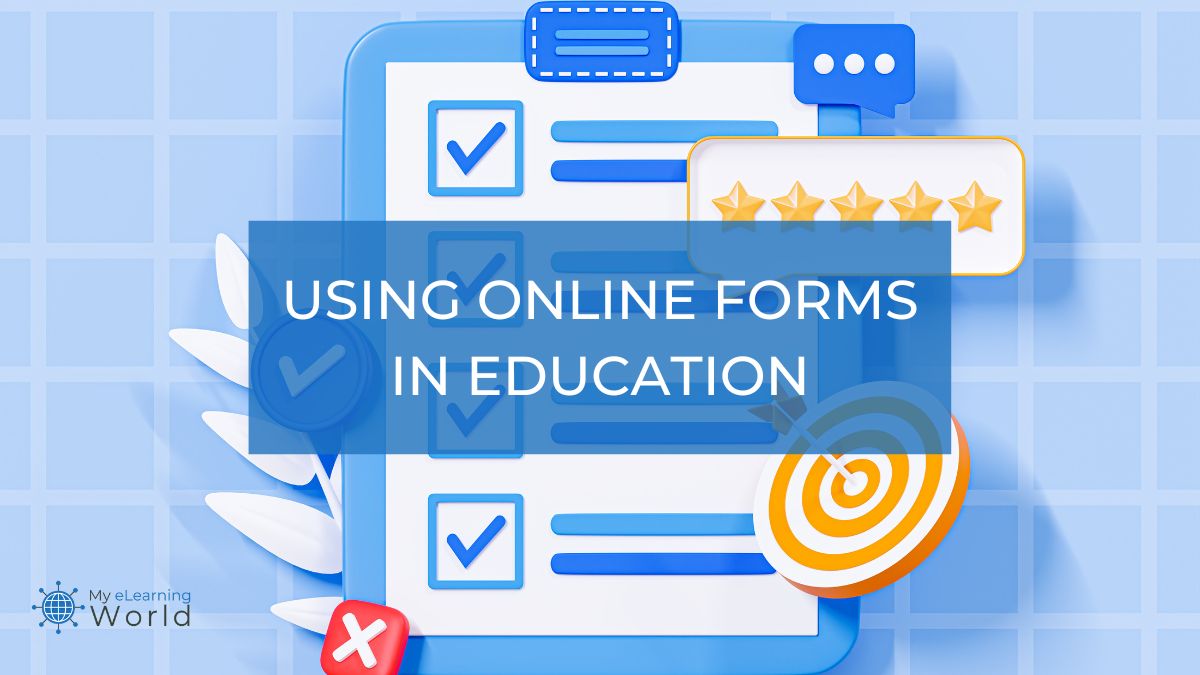As an educator, you’re always looking for new tools to help you engage your students and make learning more interactive. And while there’s no shortage of new education technology on the market, one tool that you may not have considered is using electronic forms.
Whether you teach students in person or online, electronic forms can be a great way to collect data, administer quizzes, survey students, engage with parents, and more. When used properly, I’ve found that electronic forms can not only improve engagement levels with students and other key individuals, but can also save you time and energy.
In the guide below, I’ll discuss everything you need to know about using online forms in education, including the advantages they offer, ways to use them, and recommendations about great form builder tools you can use.
Why Should You Use Forms for Online Education?
Before you spend the time trying to figure out how to use forms in online education, you might be wondering why you should even bother.
After all, there are plenty of other ways to engage students and collect data, right?
Well, the answer is that electronic forms offer a number of advantages that other methods simply can’t match.
Some of the most notable benefits of using online forms in education include:
- Convenience: One of the biggest advantages of using electronic forms is that they’re extremely convenient. You can create a form and have it sent to students in seconds, and the data you collect will be automatically stored in a central location. I’ve found that this is a huge time-saver, especially if you’re working with a large number of students.
- Accuracy: Another big benefit of using electronic forms is that they can help you collect more accurate data. When you use paper forms, there’s always the risk that data will be entered incorrectly. But with electronic forms, the data is entered directly into a database, so you can be confident that it’s accurate.
- Interactivity: Electronic forms can also be very interactive. You can add images, videos, and other media to your forms to make them more engaging, and you can even create forms that adapt based on the answers a student provides. This makes it easy to create custom learning experiences for each student.
- Security: When organizations store data online, one of their primary concerns is data security. The data you enter into electronic forms is protected by encryption and other security measures, preventing third parties from gaining access to it without your permission.
Ways To Use Electronic Forms In Education
If you’re also an educator and struggling to manage the workload, then electronic forms can be of great help.
Here are a few ways you can use electronic forms as a learner or an educator:
1. Homework
The distribution, collection, and discussion of students’ digital homework assignments can be accomplished relatively easily using mobile forms.
With an online form builder like my personal favorite Jotform, your digital homework assignments can be readily customized with several fields to accommodate each distinct style of response, including text fields for short and lengthy answers to questions, checkbox categories for multiple-choice responses, sketch, and image fields for visually depicted and drawn responses.
2. Online Quizzes and Tests
Similarly, quizzes and tests can be easily administered through the use of online forms.
With a form builder, you can create custom-made digital quizzes and exams with secure data protection, individualized responses, and an encrypted submission process that helps to ensure the privacy of your students’ responses. This can double as a fantastic quiz maker tool.
3. Student & Parent Feedback
Another excellent way to make use of online forms is to collect student feedback. Gathering feedback from students can be done in a number of ways, such as through post-class surveys, mid-term evaluations, or end-of-semester course critiques.
If your students are younger and you need to interact with parents as well, online forms can be used for this purpose as well.
You can use a form builder to create a parent feedback form that can be easily filled out and submitted by parents.
4. Student Registrations
Another creative way to take advantage of electronic forms is during student registration.
If you’re running an online course or program, you can use a form builder to create a custom registration form for your students.
This form can include fields for personal information, contact details, and course preferences, making it easy for you to collect everything you need in one place.
5. Data Collection for Research Projects
And finally, electronic forms can also be used for data collection in research projects.
If you’re working on a research project that requires data from a large number of people, an online form can be a great way to collect that data.
You can create a custom form with all the fields and questions you need, and then share it with participants via email or social media.
Final Thoughts
Online forms can drastically improve the efficiency of your workflow and make it easier to collect the data you need.
If you’re an educator, I hope this article has given you some ideas on how you can use electronic forms in your work.
When used properly, they can be a powerful tool for streamlining your processes, engaging students, and conducting research.
If you’re interested in using online forms but not sure where to start, I recommend checking out Jotform’s form builder. It’s one of the best online form builders out there.
It’s a great tool for creating custom forms with no coding knowledge required, and it’s free to use.
Click here to try Jotform free today.
What are your thoughts on using electronic forms in education? Let me know in the comments below!


